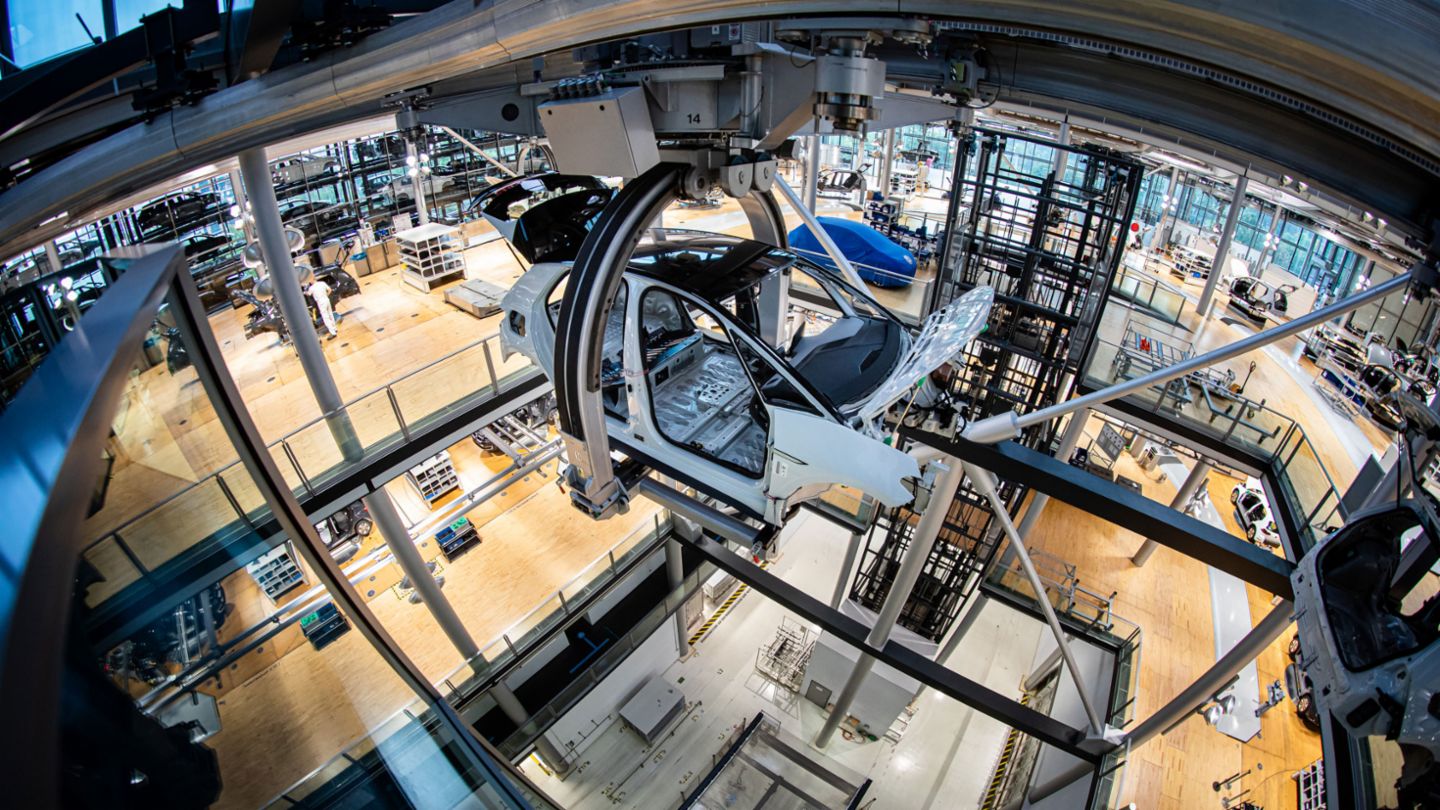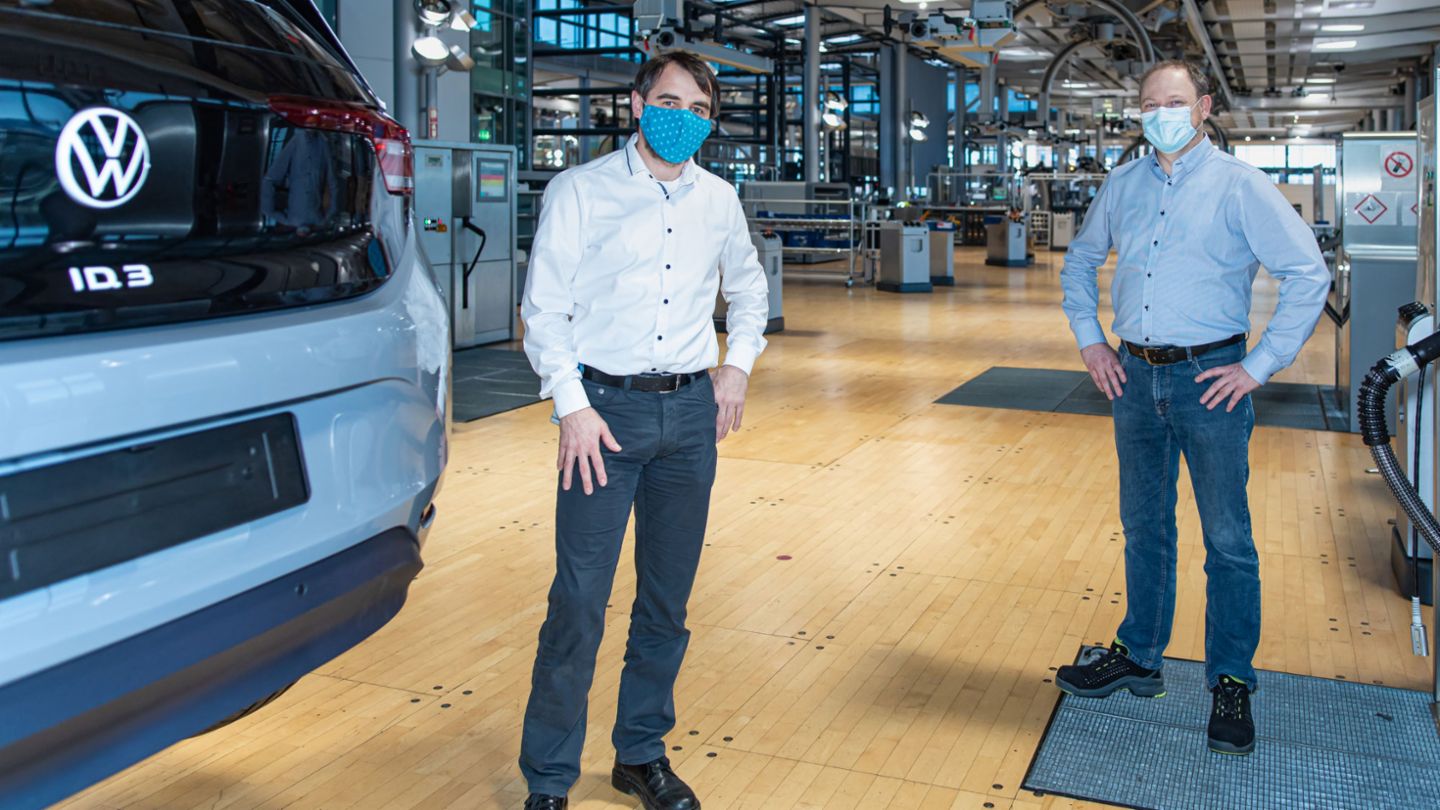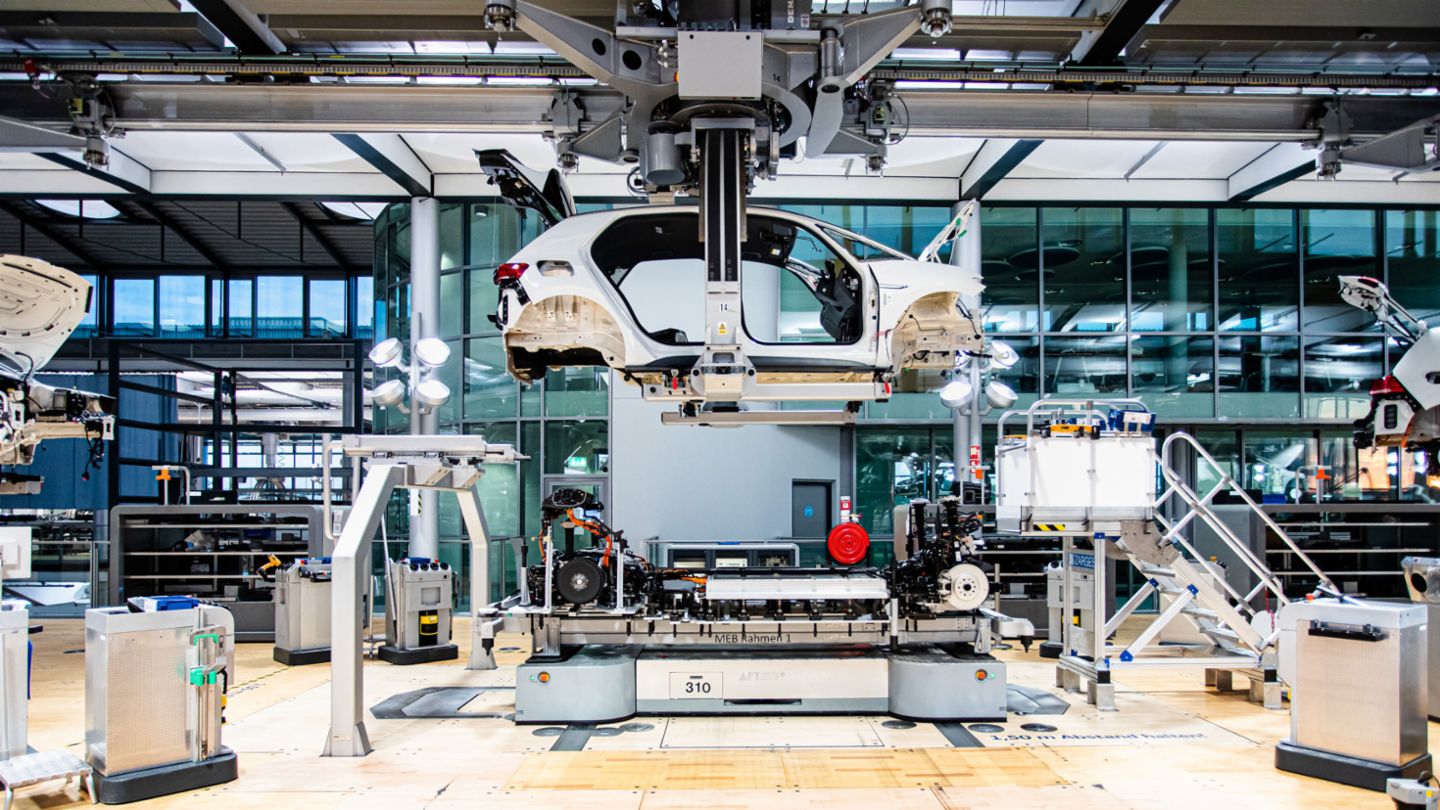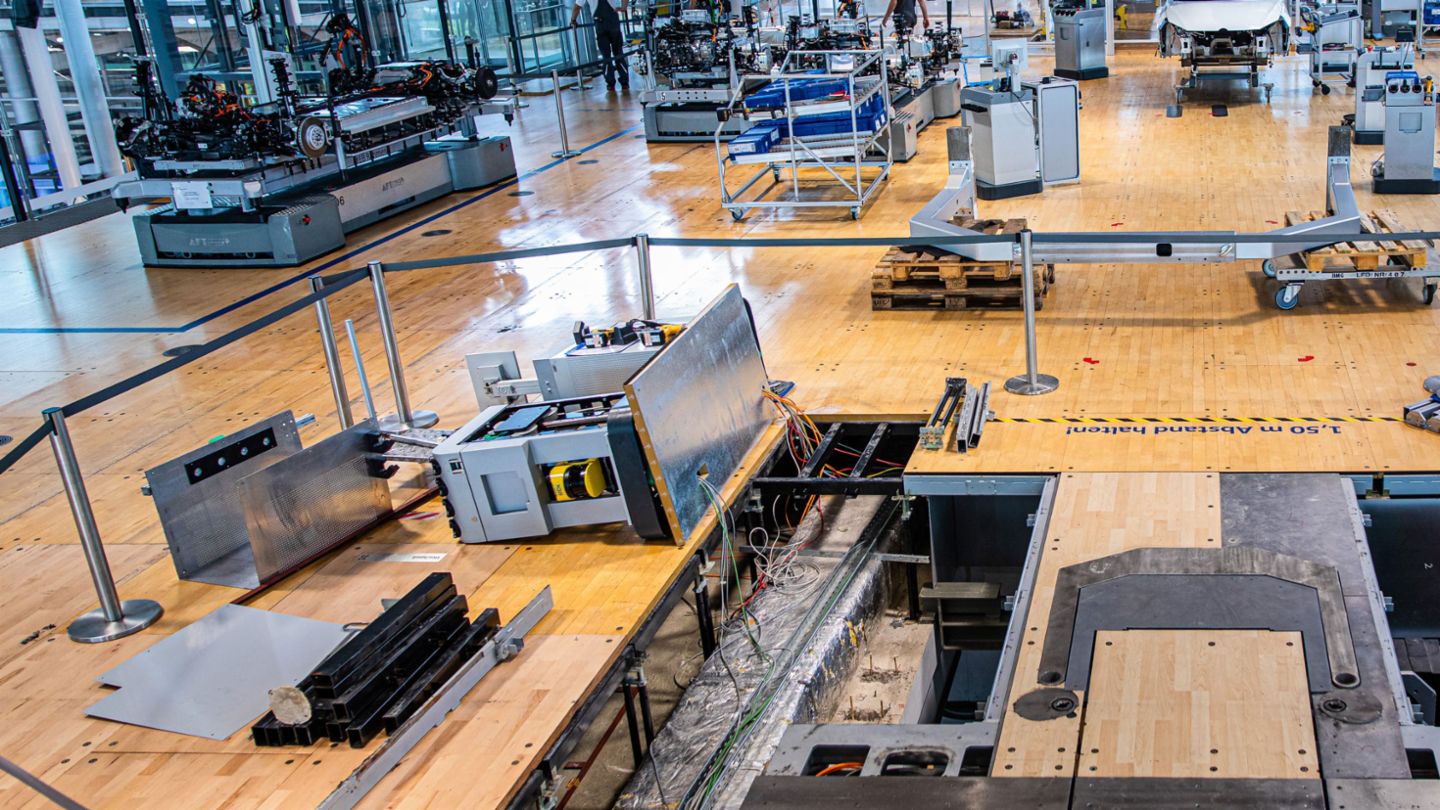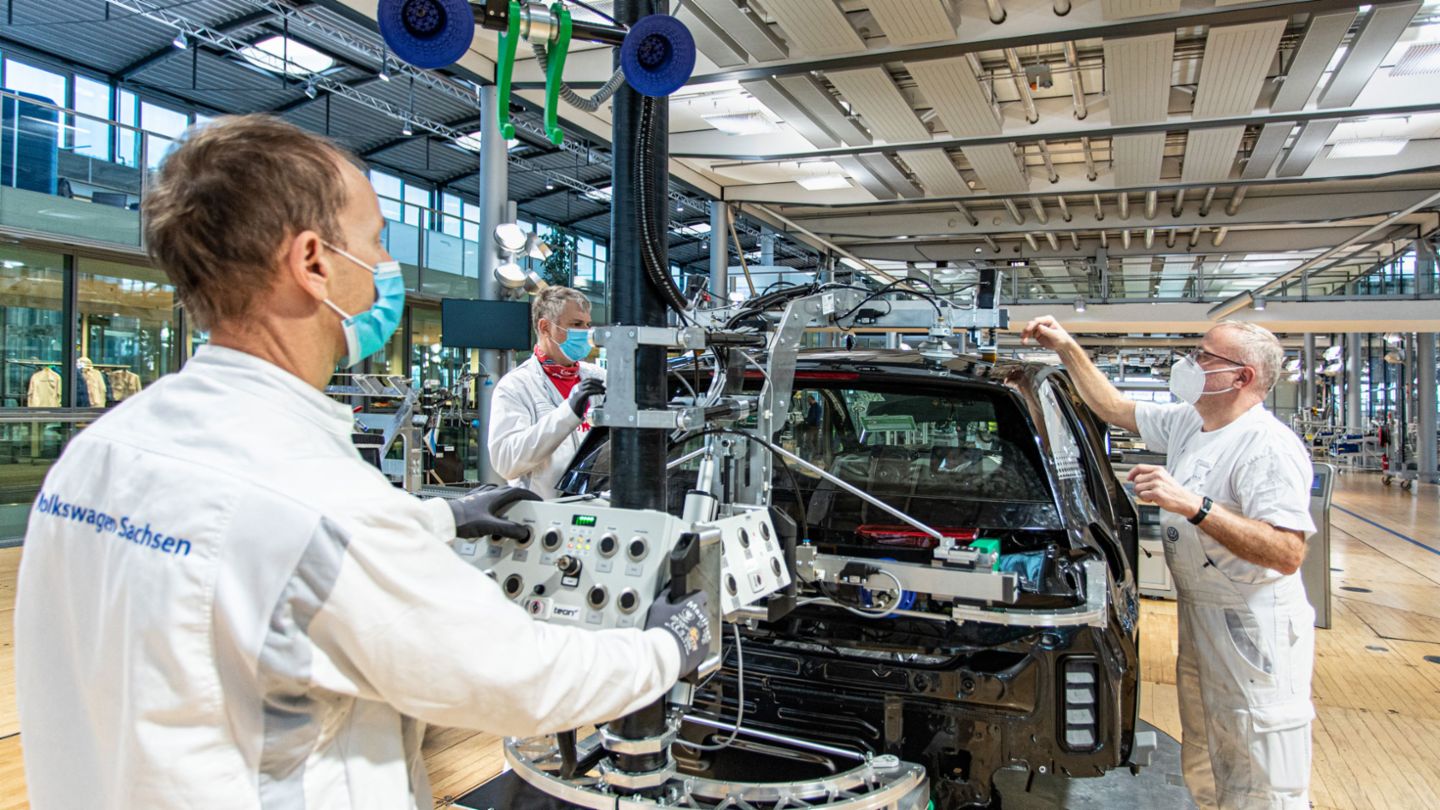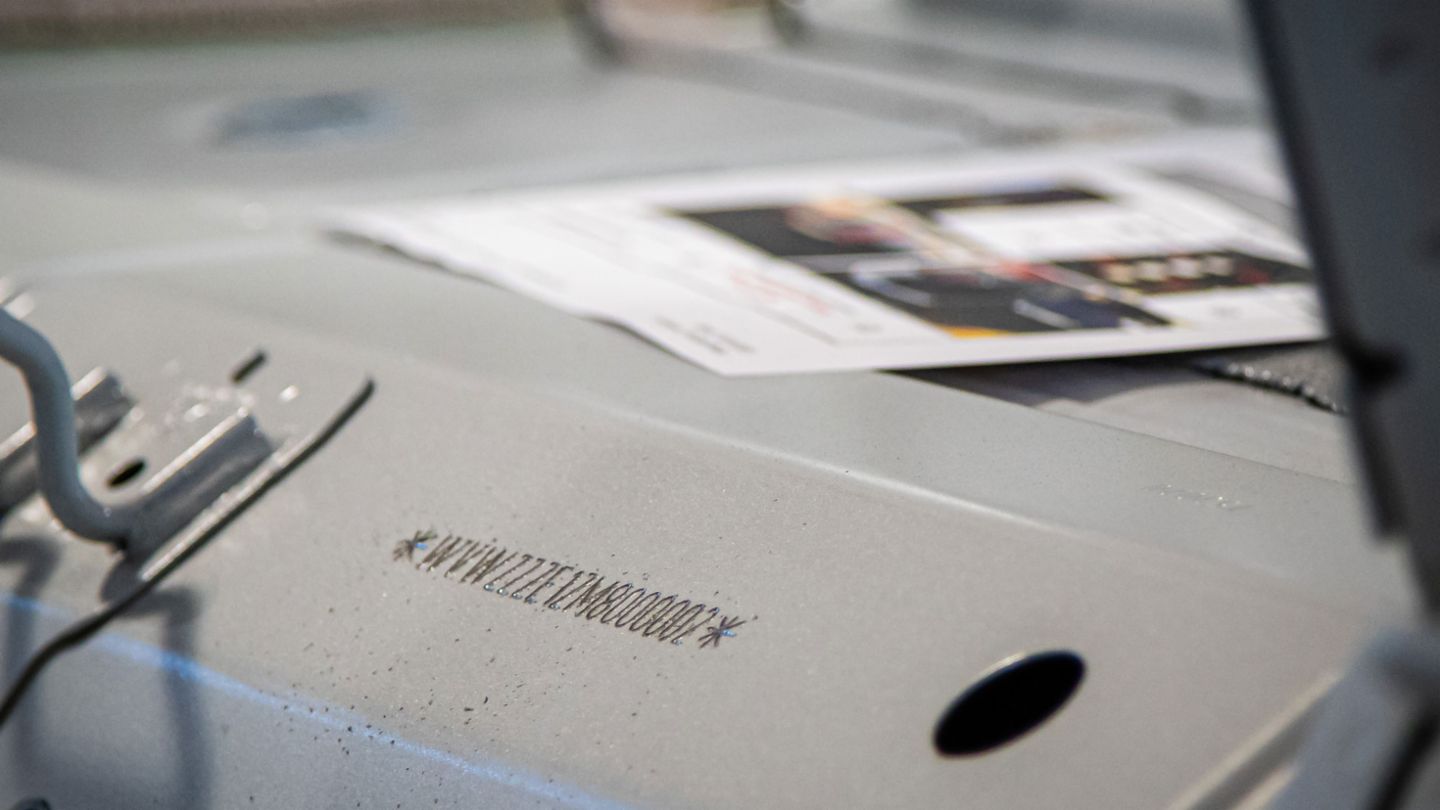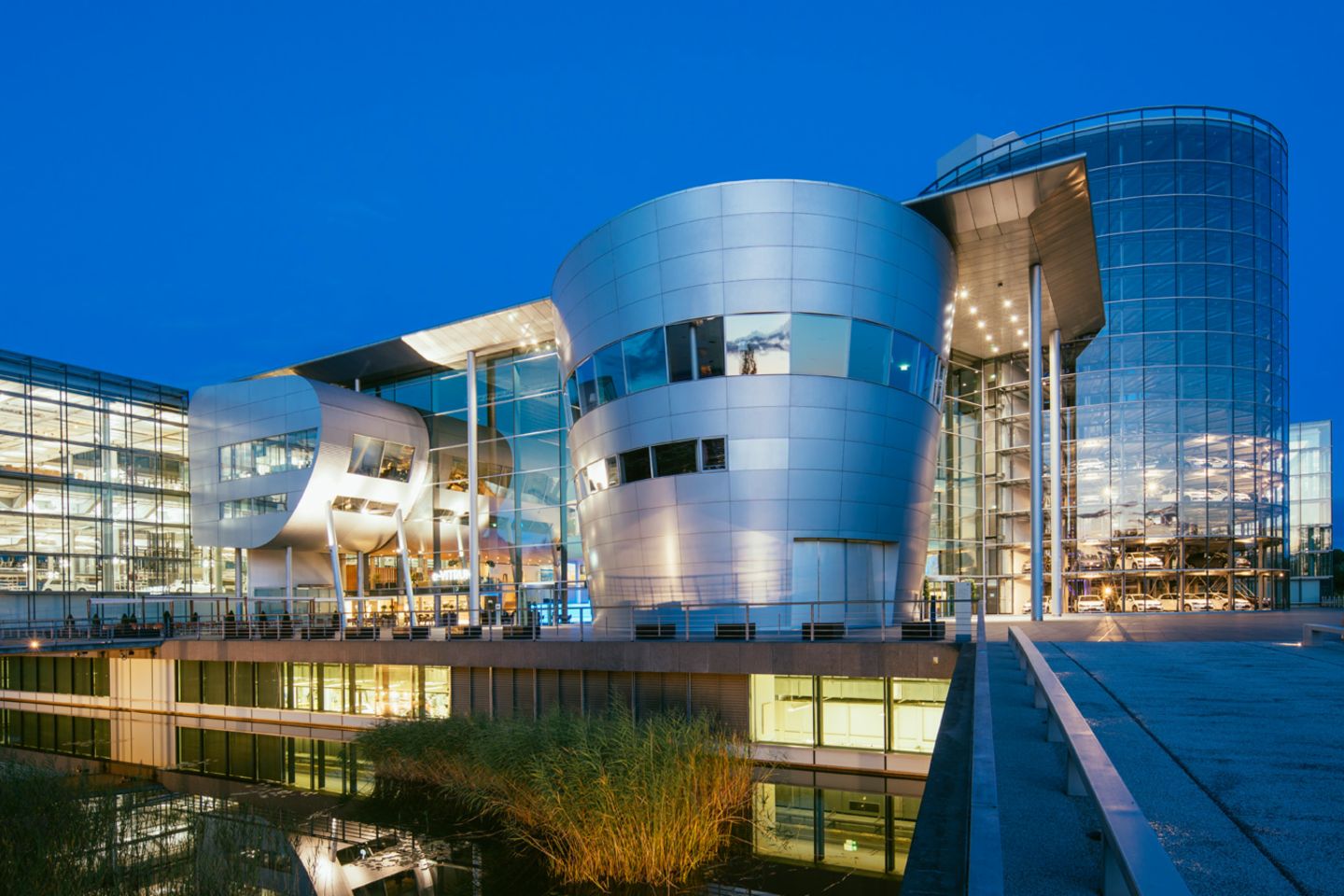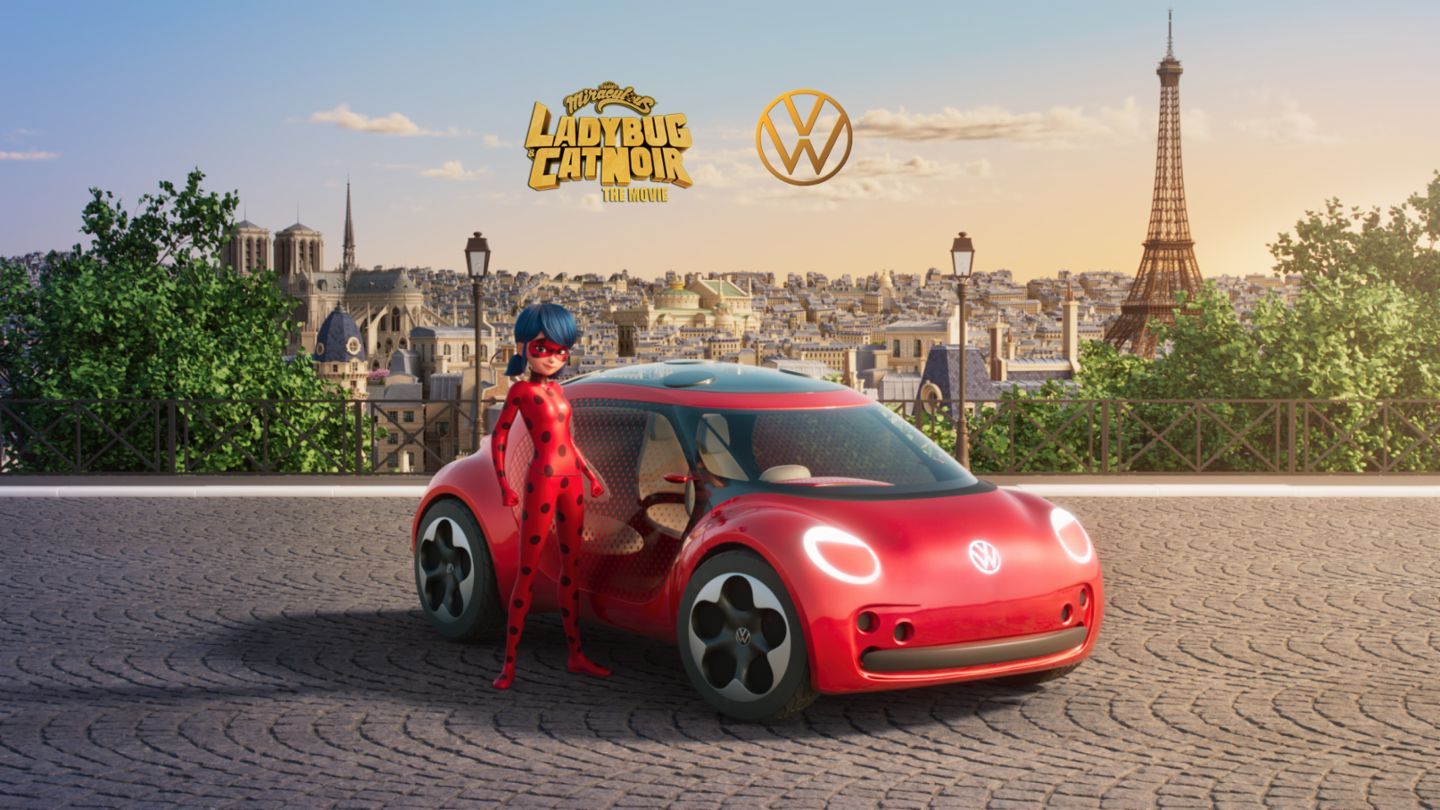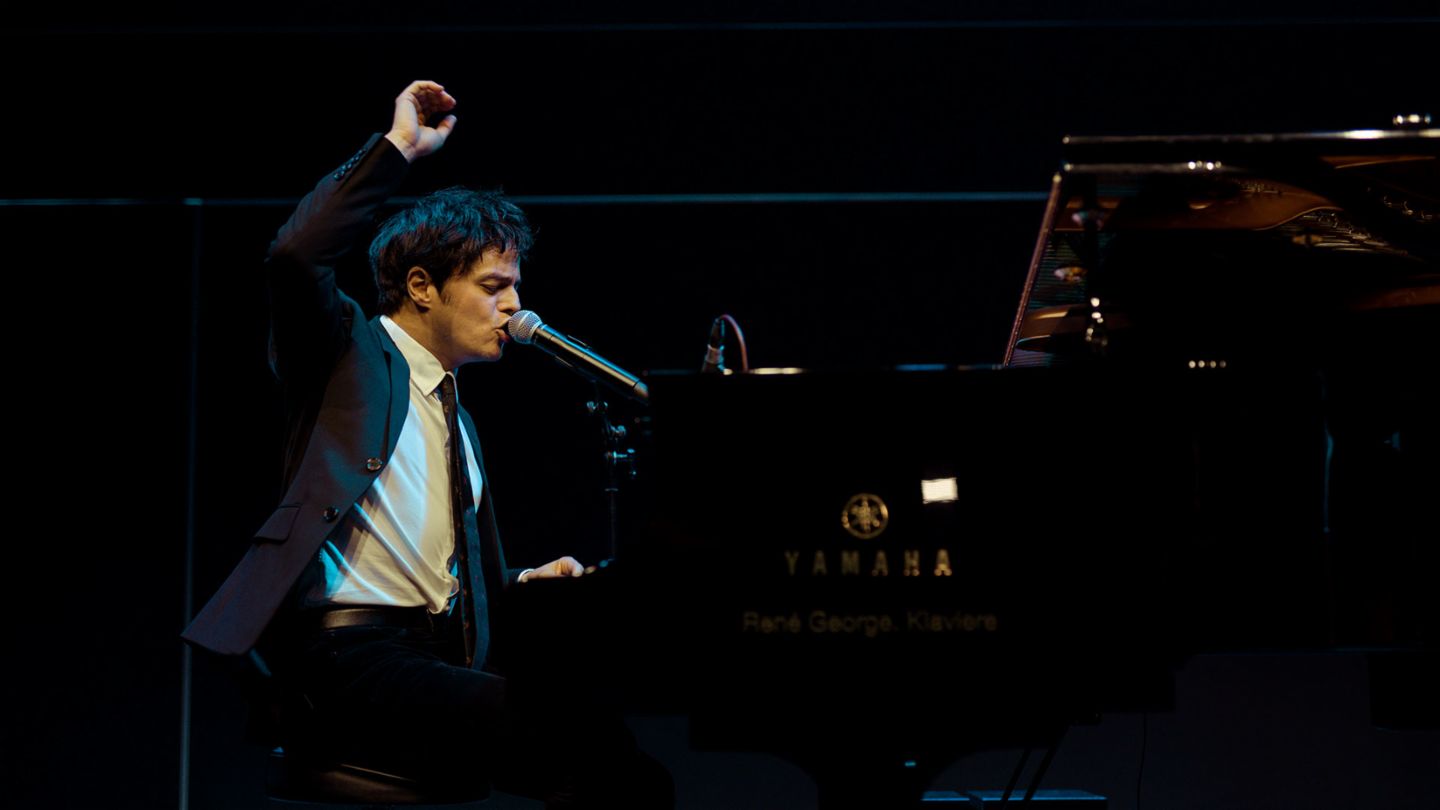The gray-painted body of the ID.31 rests securely in its hanger. But now there's a hitch: The body doesn't like to move to the robot that stamps the chassis number into the sheet metal. It is the first work step in the almost rebuilt production line at the Gläserne Manufaktur Dresden. Between the time the last e-Golf2 rolled off the line and the planned start of production of the ID.31, there were only a few weeks to convert the production line to the ID.31. A reporter accompanied the exciting conversion phase for us with camera and pen.
Passing the baton: Following the end of production of the e-Golf shortly before Christmas, series production of the ID.3 will begin in Dresden in January 2021.
